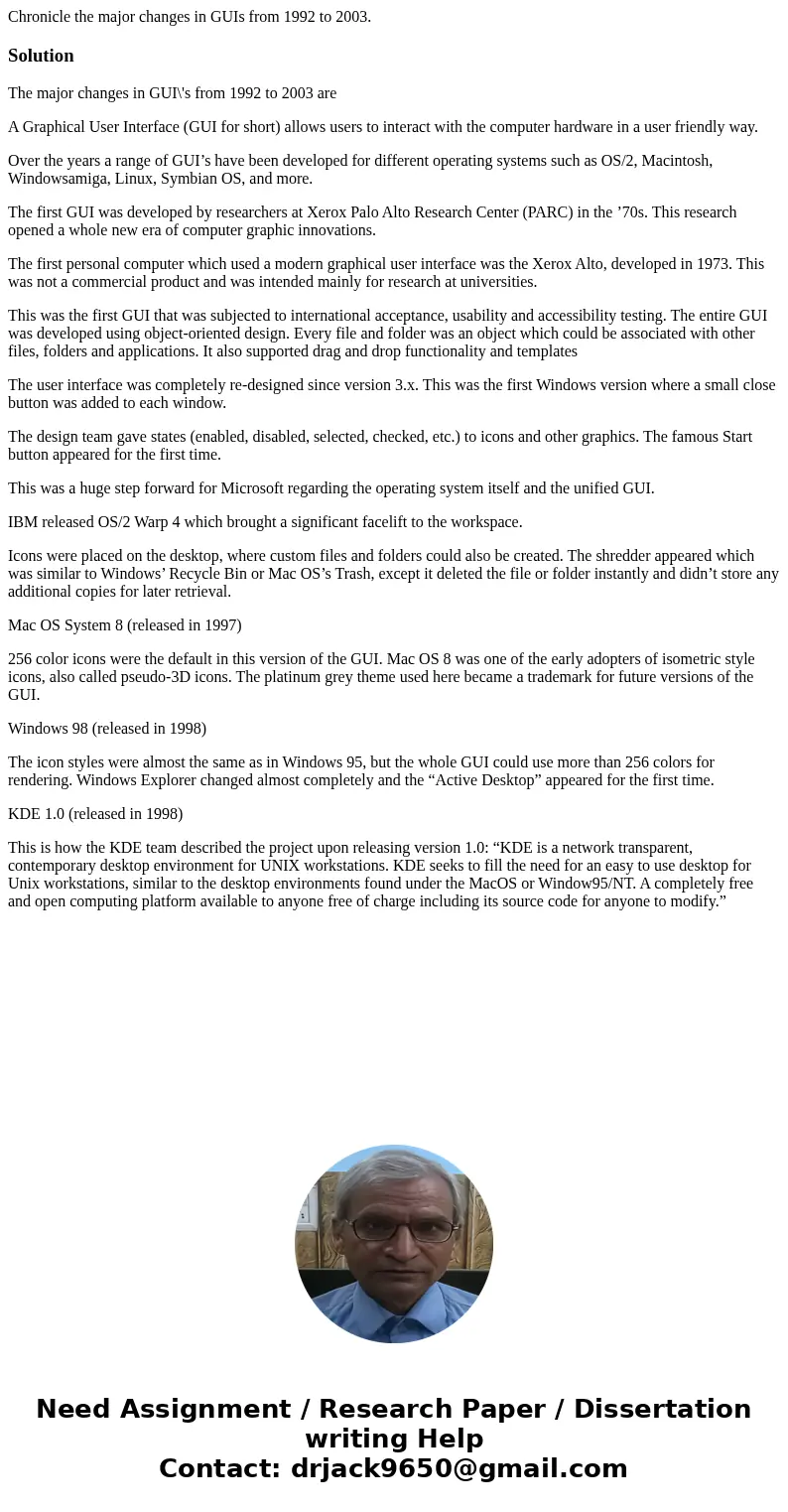Chronicle the major changes in GUIs from 1992 to 2003Solutio
Chronicle the major changes in GUIs from 1992 to 2003.
Solution
The major changes in GUI\'s from 1992 to 2003 are
A Graphical User Interface (GUI for short) allows users to interact with the computer hardware in a user friendly way.
Over the years a range of GUI’s have been developed for different operating systems such as OS/2, Macintosh, Windowsamiga, Linux, Symbian OS, and more.
The first GUI was developed by researchers at Xerox Palo Alto Research Center (PARC) in the ’70s. This research opened a whole new era of computer graphic innovations.
The first personal computer which used a modern graphical user interface was the Xerox Alto, developed in 1973. This was not a commercial product and was intended mainly for research at universities.
This was the first GUI that was subjected to international acceptance, usability and accessibility testing. The entire GUI was developed using object-oriented design. Every file and folder was an object which could be associated with other files, folders and applications. It also supported drag and drop functionality and templates
The user interface was completely re-designed since version 3.x. This was the first Windows version where a small close button was added to each window.
The design team gave states (enabled, disabled, selected, checked, etc.) to icons and other graphics. The famous Start button appeared for the first time.
This was a huge step forward for Microsoft regarding the operating system itself and the unified GUI.
IBM released OS/2 Warp 4 which brought a significant facelift to the workspace.
Icons were placed on the desktop, where custom files and folders could also be created. The shredder appeared which was similar to Windows’ Recycle Bin or Mac OS’s Trash, except it deleted the file or folder instantly and didn’t store any additional copies for later retrieval.
Mac OS System 8 (released in 1997)
256 color icons were the default in this version of the GUI. Mac OS 8 was one of the early adopters of isometric style icons, also called pseudo-3D icons. The platinum grey theme used here became a trademark for future versions of the GUI.
Windows 98 (released in 1998)
The icon styles were almost the same as in Windows 95, but the whole GUI could use more than 256 colors for rendering. Windows Explorer changed almost completely and the “Active Desktop” appeared for the first time.
KDE 1.0 (released in 1998)
This is how the KDE team described the project upon releasing version 1.0: “KDE is a network transparent, contemporary desktop environment for UNIX workstations. KDE seeks to fill the need for an easy to use desktop for Unix workstations, similar to the desktop environments found under the MacOS or Window95/NT. A completely free and open computing platform available to anyone free of charge including its source code for anyone to modify.”

 Homework Sourse
Homework Sourse